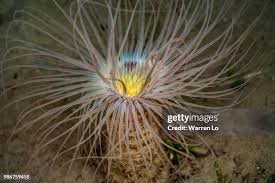The Importance and Care of Anemones

Introduction
Anemones, both terrestrial and marine, are significant in ecosystems due to their unique biological characteristics. These vibrant flowers and fascinating sea creatures play crucial roles in their environments. Understanding anemones helps in preserving biodiversity and promoting ecological awareness.
Types of Anemones
There are two primary types of anemones: terrestrial and marine. Terrestrial anemones, often found in gardens, add colour and charm with their varied hues and forms. They belong to the genus Anemone, with species like the wood anemone and the Japanese anemone being particularly popular among gardeners.
Marine anemones, belonging to the order Actiniaria, are a part of the coral reef ecosystem. They are not true anemones in the plant sense but are instead cnidarians that resemble flowers. Common species include the green anemone and the clownfish-associated sea anemone.
Ecological Importance
In marine environments, anemones provide shelter and protection for various fish species, including the well-known clownfish. This symbiotic relationship benefits both organisms; the clownfish gains protection from predators while providing nutrients to the anemone through its waste. In this way, anemones contribute to the health and stability of the marine ecosystem.
Terrestrial anemones serve as vital resources for pollinators, such as bees and butterflies, helping in the pollination process. The flowers are often indicators of soil health and biodiversity, signalling a balanced ecosystem.
Care and Cultivation
For those looking to cultivate terrestrial anemones, proper care is essential. They thrive in well-drained soil and require full to partial sunlight. Regular watering, especially in dry seasons, is crucial, yet overwatering should be avoided to prevent root rot. Gardeners should also be cautious of pests and diseases that can affect growth.
Marine anemones, on the other hand, require specific tank settings if kept in aquariums. They need stable water conditions, appropriate tank mates, and sufficient lighting to thrive. It is important not to overcrowd the tank, as these creatures can be territorial.
Conclusion
The importance of both terrestrial and marine anemones cannot be overstated. As vital components of their respective ecosystems, they contribute to biodiversity, assist in ecological balance, and enhance the beauty of natural and cultivated environments. With increasing awareness about the conservation of these species, it is essential for gardeners, aquarists, and the general public to appreciate and protect these remarkable organisms.









